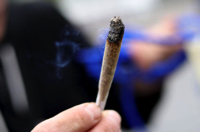
As is the case with many things (gambling, drugs, alcohol), their use is a stupid-tax on the poor.
But legalization and our growing cultural acceptance of marijuana have disproportionately affected one group in particular: the lower class.
A recent study by Steven Davenport of RAND and Jonathan Caulkins of Carnegie Mellon notes that “despite the popular stereotype of marijuana users as well-off and well-educated . . . they lag behind national averages” on both income and schooling.
For instance, people who have a household income of less than $20,000 a year comprise 19 percent of the population but make up 28 percent of marijuana users. And even though those who earn more than $75,000 make up 33 percent of the population, 25 percent of them are marijuana users. Having more education also seems to make it less likely that you are a user. College graduates make up 27 percent of the population but only 19 percent of marijuana users.
‘Legalization and our growing cultural acceptance of marijuana have disproportionately affected one group in particular: the lower class.’
The middle and upper classes have been the ones out there pushing for decriminalization and legalization measures, and they have also tried to demolish the cultural taboo against smoking pot. But they themselves have chosen not to partake very much. Which is not surprising. Middle-class men and women who have jobs and families know that this is not a habit they want to take up with any regularity because it will interfere with their ability to do their jobs and take care of their families.
But the poor, who already have a hard time holding down jobs and taking care of their families, are more frequently using a drug that makes it harder for them to focus, to remember things and to behave responsibly.
The new study, which looked at use rates between 1992 and 2013, also found that the intensity of use had increased in this time. The proportion of users who smoke daily or near daily has increased from 1 in 9 to 1 in 3. As Davenport tells me, “This dispels the idea that the typical user is someone on weekends who has a casual habit.”
Via the NY Post